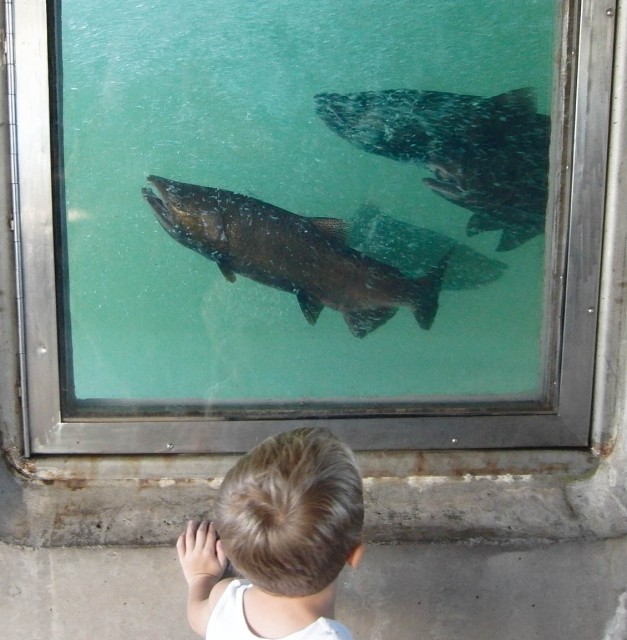
Because of the drought, millions of baby salmon from Northern California are about to get a truck ride to the Sacramento-San Joaquin Delta.
The fish, juvenile fall-run chinook salmon, would normally ride the Sacramento River for 200 miles from the Coleman National Fish Hatchery to the Delta, then swim to San Francisco Bay and through the Golden Gate. But because of this year's critical lack of precipitation, the Sacramento is running low, slow and clear — all conditions that threaten the survival of out-migrating salmon.
The conditions have prompted the U.S. Fish and Wildlife Service to follow through on a provisional plan announced earlier this month to start trucking the salmon from Coleman to the Delta. The service announced today that the first load of this year's production of 12 million fish will leave the hatchery at 4 a.m. Tuesday and be driven to a holding pen at Rio Vista.
Bob Clarke, regional fisheries program supervisor for the Fish and Wildlife Service, says conditions along the Sacramento would likely be fatal to all the juvenile fall-run salmon that Coleman hatchery would usually release directly into the river. "It could literally be lethal to all the fish released, and none of them would make it out to the ocean," Clarke said in a recent interview. "That would do nobody any good to release fish at Coleman and have them all perish."
The outmigrating hatchery fish face a range of hazards in this drought year. The river is clearer than normal because of low flows, and that makes it easier for predators to find the fish. The lack of fresh rainfall and snow melt moving downstream has resulted in higher and potentially deadly water temperatures in the lower Sacramento. And in the Delta, fish can get lost because a channel that's normally blocked at this time of year to keep young salmon on course has been left open to allow fresh water to circulate more freely.